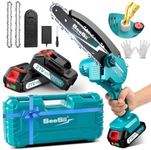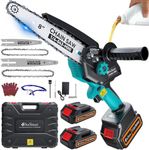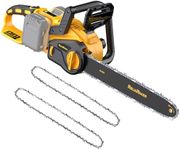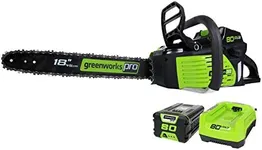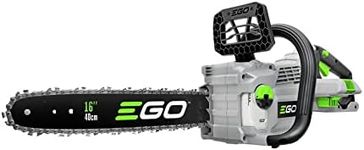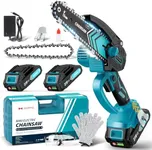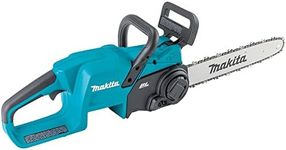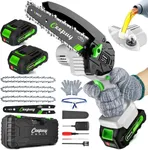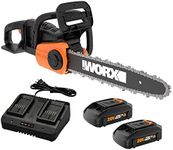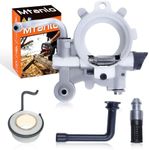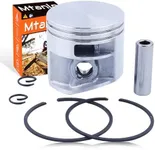Buying Guide for the Best Battery Powered Chainsaws
Choosing the right battery-powered chainsaw can make your cutting tasks easier and more efficient. Whether you are a homeowner looking to maintain your yard or a professional needing a reliable tool for work, understanding the key specifications will help you make an informed decision. Here are the main specs to consider when selecting a battery-powered chainsaw and how to choose the best one for your needs.Battery VoltageBattery voltage indicates the power output of the chainsaw. Higher voltage means more power, which is important for cutting through thicker or harder wood. Chainsaws typically range from 18V to 80V. For light yard work and occasional use, a lower voltage (18V-36V) may suffice. For more demanding tasks or professional use, a higher voltage (40V-80V) is recommended. Consider the type of work you will be doing to determine the appropriate voltage.
Battery Capacity (Ah)Battery capacity, measured in ampere-hours (Ah), determines how long the chainsaw can run on a single charge. A higher Ah rating means longer runtime. Chainsaws usually have batteries ranging from 2Ah to 6Ah. For small, quick jobs, a lower capacity battery (2Ah-3Ah) might be enough. For extended use or larger projects, opt for a higher capacity battery (4Ah-6Ah) to avoid frequent recharging. Match the battery capacity to the duration and intensity of your tasks.
Bar LengthThe bar length refers to the length of the cutting bar and determines the size of the wood the chainsaw can cut. Common bar lengths range from 10 inches to 18 inches. For pruning and light cutting, a shorter bar (10-12 inches) is sufficient. For cutting larger branches or small trees, a medium bar (14-16 inches) is ideal. For heavy-duty cutting or felling larger trees, a longer bar (16-18 inches) is necessary. Choose a bar length based on the size of the wood you will be cutting most often.
Chain SpeedChain speed, measured in feet per second (fps) or meters per second (m/s), indicates how fast the chain moves around the bar. Higher chain speed results in faster and smoother cuts. Chainsaws typically have chain speeds ranging from 10 m/s to 20 m/s. For light tasks and occasional use, a lower chain speed (10-15 m/s) is adequate. For frequent use or cutting harder wood, a higher chain speed (15-20 m/s) is preferable. Consider the type of wood and frequency of use to determine the right chain speed.
WeightThe weight of the chainsaw affects its ease of use and maneuverability. Lighter chainsaws are easier to handle, especially for extended periods. Chainsaws can weigh anywhere from 6 pounds to over 15 pounds. For light yard work and occasional use, a lighter chainsaw (6-10 pounds) is more comfortable. For more demanding tasks, a slightly heavier chainsaw (10-15 pounds) may be necessary for the added power and durability. Choose a weight that you can comfortably manage for the duration of your tasks.
Safety FeaturesSafety features are crucial for preventing accidents and ensuring safe operation. Common safety features include chain brakes, low kickback bars, and automatic oilers. Chain brakes stop the chain quickly in case of kickback, while low kickback bars reduce the risk of kickback. Automatic oilers keep the chain lubricated, reducing wear and tear. Look for chainsaws with these safety features to enhance your safety while using the tool. Prioritize safety features based on your experience level and the type of work you will be doing.
Ease of MaintenanceEase of maintenance refers to how simple it is to keep the chainsaw in good working condition. Features like tool-less chain tensioning, easy access to the air filter, and clear oil level indicators can make maintenance easier. Chainsaws that are easy to maintain will save you time and effort in the long run. Consider how often you will use the chainsaw and how much time you are willing to spend on maintenance when choosing a model. Opt for a chainsaw with user-friendly maintenance features to ensure longevity and reliability.
